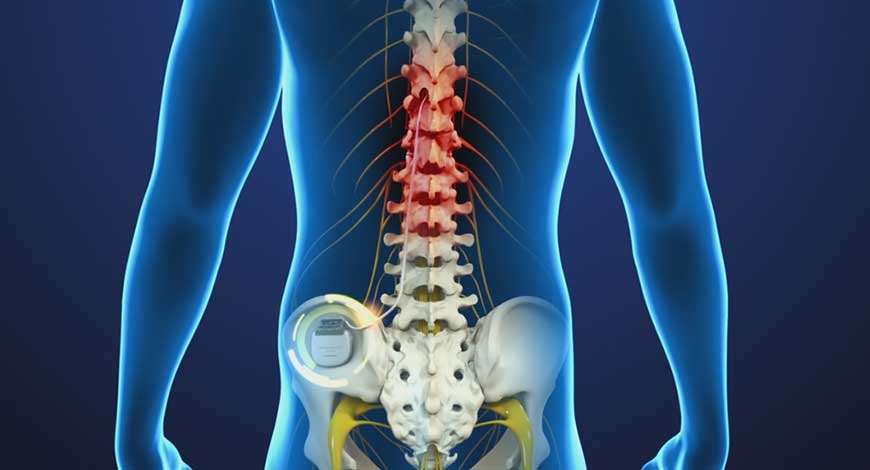Trends
Spinal cord stimulation devices market to reach USD 4.8 billion by 2032

Allied Market Research published a report titled, “Spinal cord stimulation devices market by product (Rechargeable devices and non-rechargeable devices), indication (Failed back surgery Syndrome, Complex Regional Pain Syndrome, Degenerative Disc Disease, Painful Diabetic Neuropathy, and Others), and End User (Hospitals, Ambulatory Surgical Centres, and Others): Global opportunity analysis and industry forecast, 2023-2032.” According to the report, the global spinal cord stimulation devices market was valued at $2.1 billion in 2022 and is estimated to reach $4.8 billion by 2032, exhibiting a CAGR of 8.4% from 2023 to 2032.
Prime determinants of growth:
The spinal cord stimulation devices market is experiencing growth due to several factors, such as an increase in the prevalence of chronic pain conditions, technological advancements in spinal cord stimulation devices, and the availability of medical reimbursement schemes. However, the high cost and side effects of spinal cord stimulation devices and the availability of alternative treatment options for chronic pain conditions are the factors hampering the market’s growth. On the contrary, the growth opportunities in emerging markets are expected to offer lucrative opportunities for expansion of the spinal cord stimulation devices market during the forecast period.
Covid-19 scenario:
- The pandemic led to delays in diagnosis and treatment for chronic pain conditions as healthcare systems shifted their resources to Covid-19 treatment.
- Furthermore, the closure of hospitals and clinics for surgical procedures during lockdowns resulted in a decline in patient visits and elective surgeries, including spinal cord stimulator implantation. This had resulted in a decline in demand for spinal cord stimulation devices as many patients postponed their treatments.
- However, the situation has gradually become normal with increasing funding for research and development activities, with governments and private investors recognizing the importance of developing new and innovative medical devices to address chronic pain management.
The rechargeable devices segment to maintain its leadership status throughout the forecast period:
Based on product, the rechargeable devices segment held the largest share in 2022, accounting for more than two-thirds of the global spinal cord stimulation devices market revenue and is projected to maintain its leadership status throughout the forecast period. The same segment would display the highest CAGR of 8.6% during the forecast period. owing to several advantages they offer over non-rechargeable devices, such as longer battery life, higher flexibility in programming, and the ability to adjust the stimulation settings according to the patient’s needs.
The failed back surgery syndrome segment is anticipated to maintain its dominance throughout the forecast period:
Based on indication, the failed back surgery syndrome segment held the largest share in 2022, contributing to nearly two-fifths of the global spinal cord stimulation devices market revenue, and is anticipated to maintain its dominance throughout the forecast period. Due to an increase in spinal surgeries, more people are turning to spinal cord stimulation therapy, which has been shown to be successful in treating failed back surgery syndrome. However, degenerative disk disease segment is projected to register highest CAGR of 8.9% from 2023 to 2032. Due to an increase in the number of patients with degenerative disk disease and the use of spinal cord stimulation therapy to treat chronic pain.
The hospitals segment to maintain its lead position during the forecast period
Based on end user, the hospitals segment accounted for the largest share in 2022, accounting for more than three-fifth of the global spinal cord stimulation devices market revenue, and is projected to maintain its lead position during the forecast period. The same segment would portray the highest CAGR of 8.6% during the forecast period. Due to the availability and access to specialized healthcare professionals, advanced medical technologies and infrastructure, and strong relationships with insurance providers, resulting in the adoption of spinal cord stimulation therapy.
North America to maintain its dominance by 2032:
Based on region, North America held the highest market share in terms of revenue in 2022, accounting for more than two-thirds of the global spinal cord stimulation devices market revenue, and it is likely to maintain its dominance by 2032. owing to the high prevalence of chronic pain conditions, the availability of advanced healthcare facilities, and the presence of major players offering spinal cord stimulation devices. In addition, favorable reimbursement policies in healthcare systems and a rise in the geriatric population are expected to propel market expansion. However, the Asia-Pacific region is expected to witness the fastest CAGR of 9.5% from 2023 to 2032. owing to a rise in the number of cases of chronic pain conditions, an increase in awareness regarding available spinal cord stimulation treatment devices, and a surge in investments for the development of effective spinal cord stimulation devices for chronic pain.
Leading market players:
- Saluda Medical Pty Ltd.
- Nevro Corporation
- BIOTRONIK SE & Co. KG
- Abbott Laboratories
- Teliatry, Inc.
- Nalu Medical, Inc.
- Boston Scientific Corporation
- GIMER MEDICAL
- Beijing PINS Medical Co., Ltd.
- Medtronic plc
The report provides a detailed analysis of these key players in the global spinal cord stimulation devices market. These players have adopted different strategies, such as acquisition, product launch, product approval, and expansion, to increase their market share and maintain dominant positions in different regions. The report is valuable in highlighting business performance, operating segments, product portfolios, and strategic moves of market players to showcase the competitive scenario. Allied Market Research













